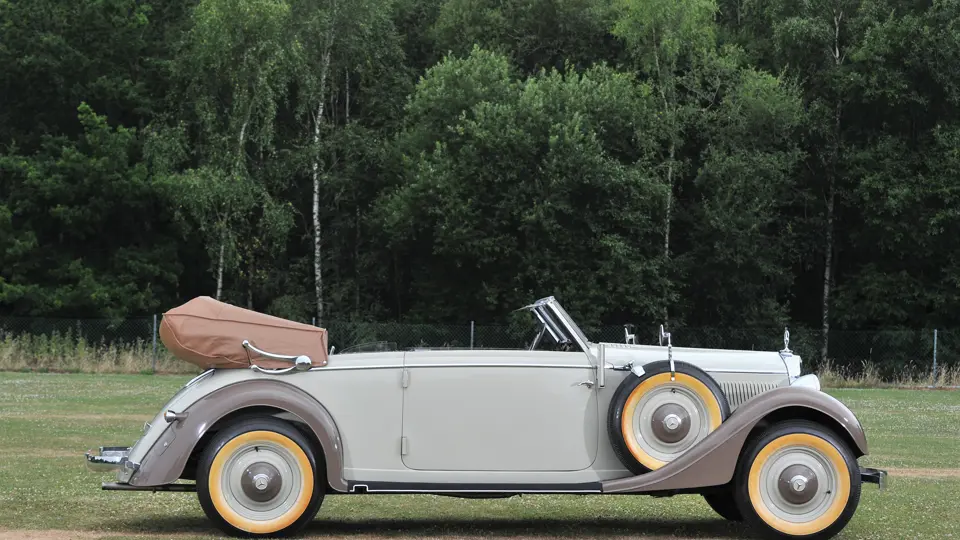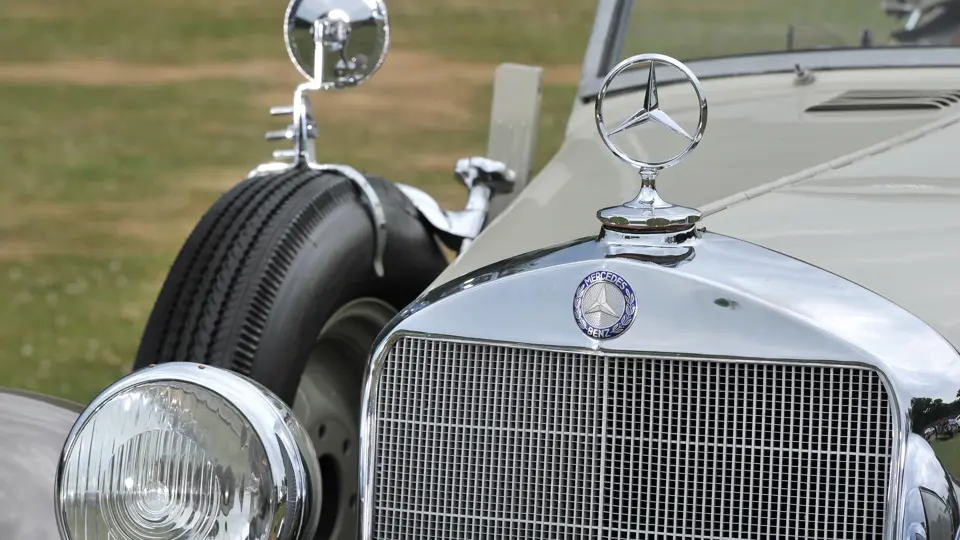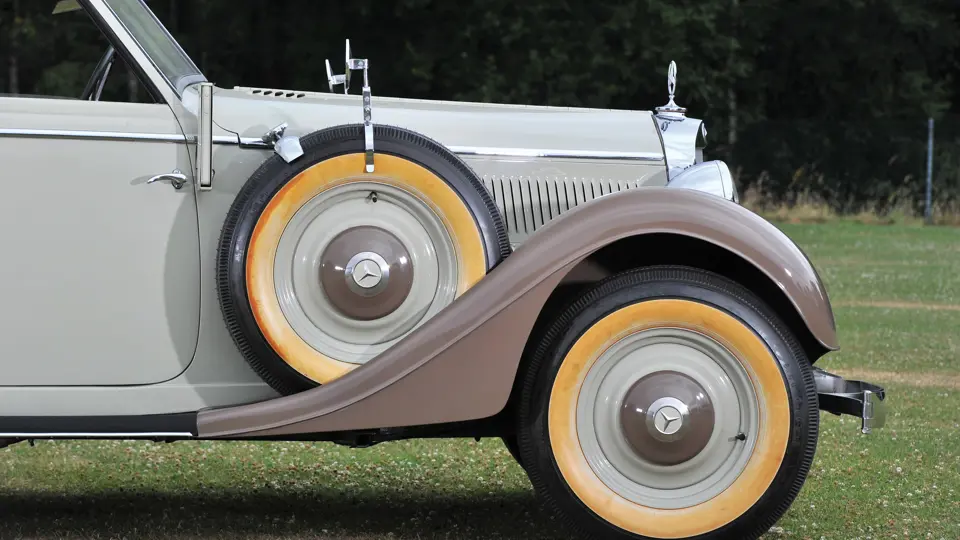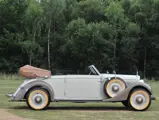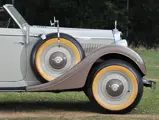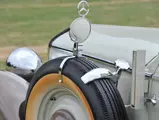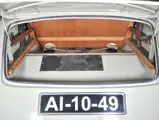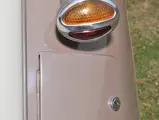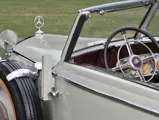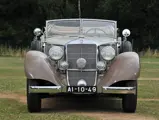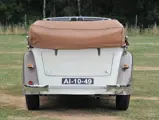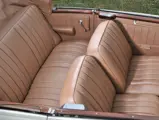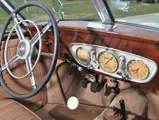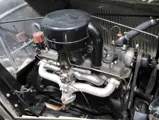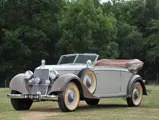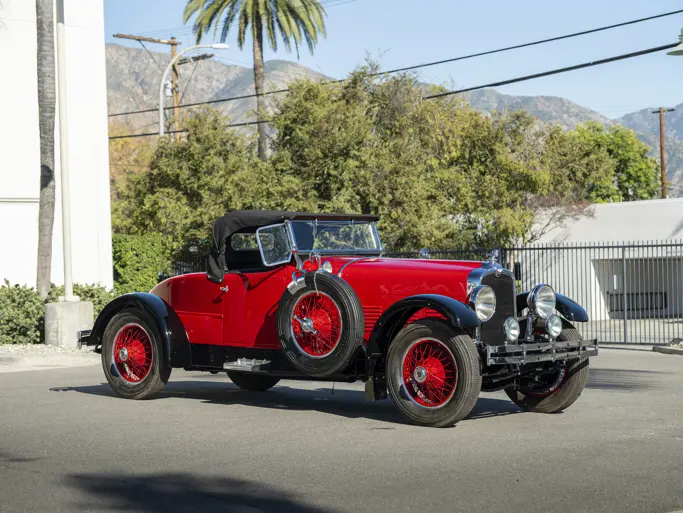78 hp, 3,208 cc, L-head inline six-cylinder engine, four-speed manual gearbox, four-wheel independent suspension, and four-wheel hydraulic drum brakes. Wheelbase: 3,300 mm
Although Mercedes’ 170-series W136 cars were the most popular in the years leading up to World War II, a larger six-cylinder companion, designated W142, was launched in 1937. As a successor to the W18 Type 290 cars from 1933–1937, it shared the earlier car’s 2,880-millimetre wheelbase in its standard version, but longer overhang, both in the front and rear, gave it substantially greater overall length. Both two- and three-passenger cabriolet A and coupé bodies were offered.
The engine was enlarged to a 3,208-cubic centimetre side-valve six and teamed with an all-synchro four-speed gearbox, which was unusual for its time. The suspension, carried over from the W18, was independent on all wheels, and it utilised a transverse leaf in the front, which was augmented by coils at the wheels, and swing axles in the rear. A longer, 3,300-millimetre wheelbase was available as the W142/II, and it offered additional body styles, including limousines in several configurations, a 2+2 roadster, and cabriolets B and D, which were four-seaters with two and four doors, respectively.
This handsome Cabriolet B presents well in beige and brown, although close inspection shows some stress cracking to the paint from age. The brown leather interior, however, is like new and shows no wear. It is nicely set off by tan carpeting with brown piping, and the wood instrument panel and window mouldings are lacquered to a high gloss. The boot is unfinished, although brackets have been installed for shelving to better accommodate rectangular luggage. The hood is tan canvas, which exhibits light soiling in places, but the top boots, of both leather and canvas, are also included with the car. Dual side-mount spares rest in the wings and are fitted with mirrors. Trafficators have been installed on the forward door posts, and a central driving light is flanked by dual horns.
The engine compartment and undercarriage are both fully functional, but they are of driver quality and have not been detailed. Similarly, the tyres are older and their whitewalls have yellowed. With the correct vision and a modest amount of detailing, this example will be a stunning asset in any collection.
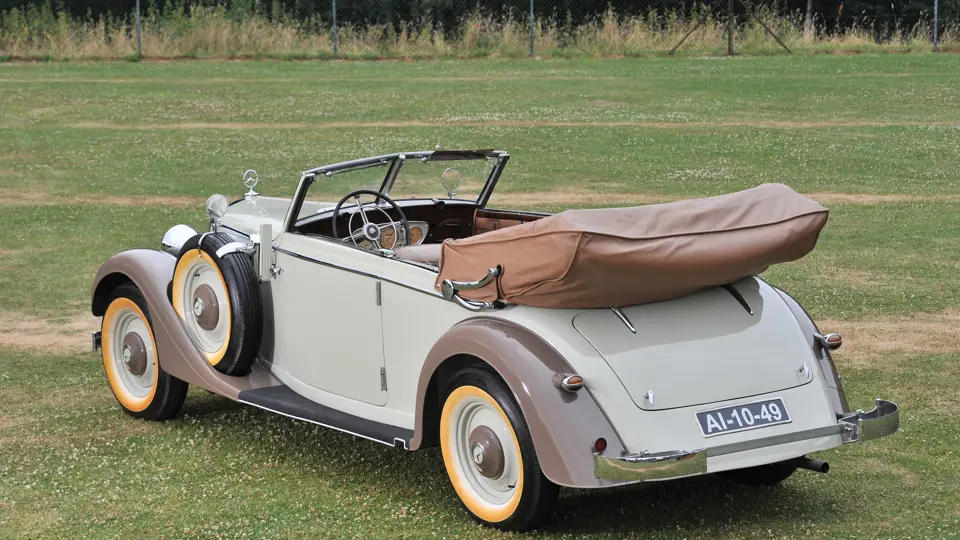



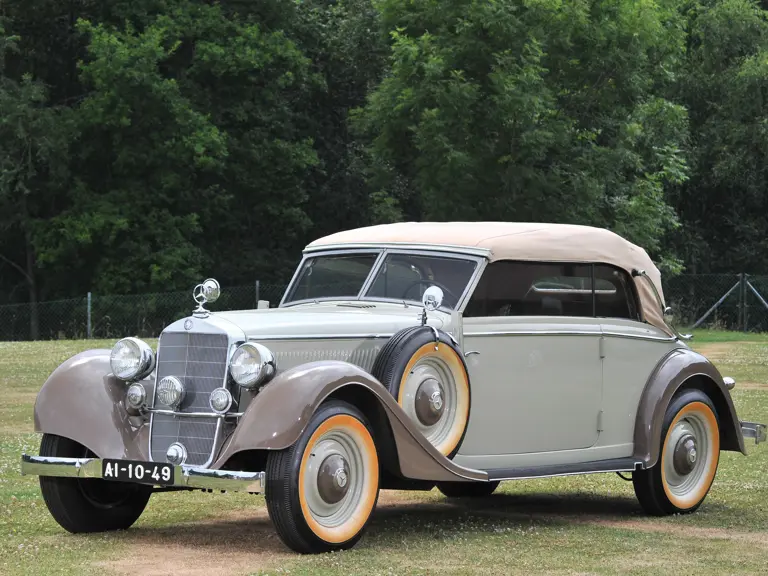
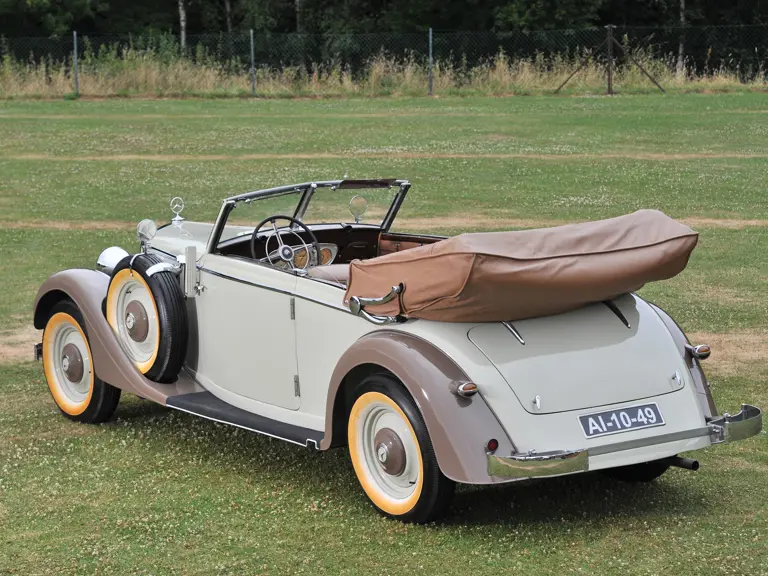
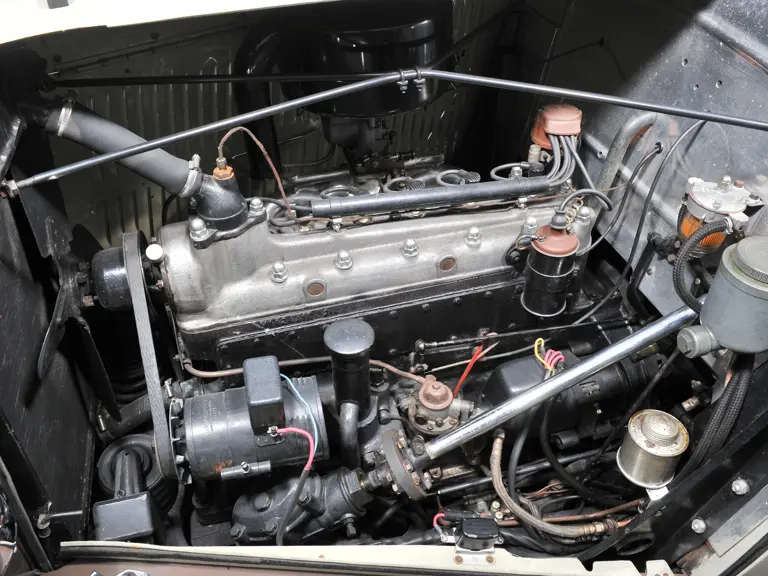
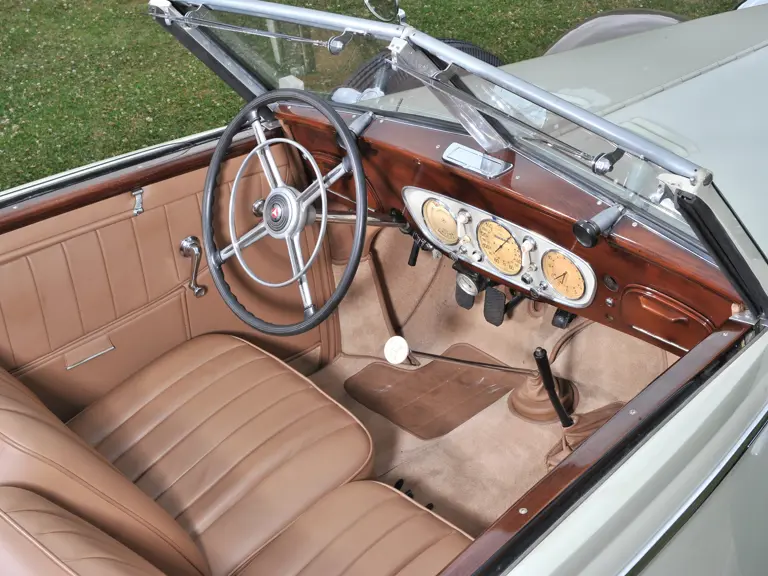
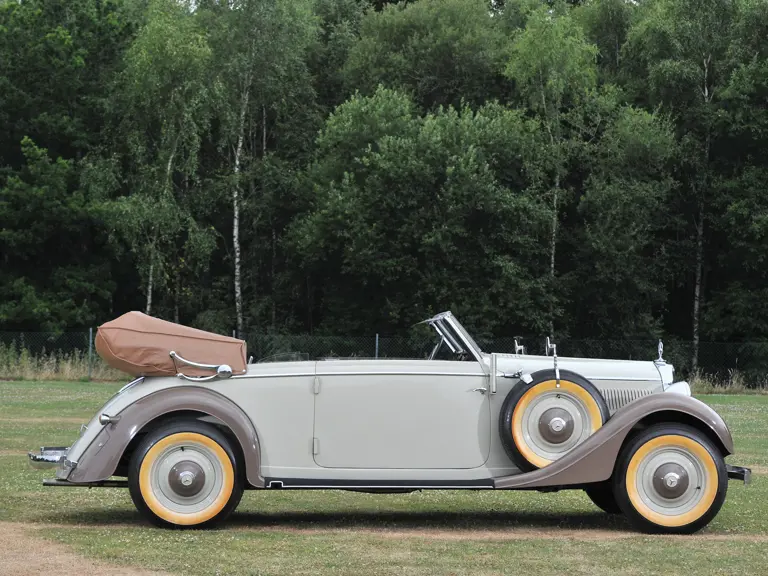
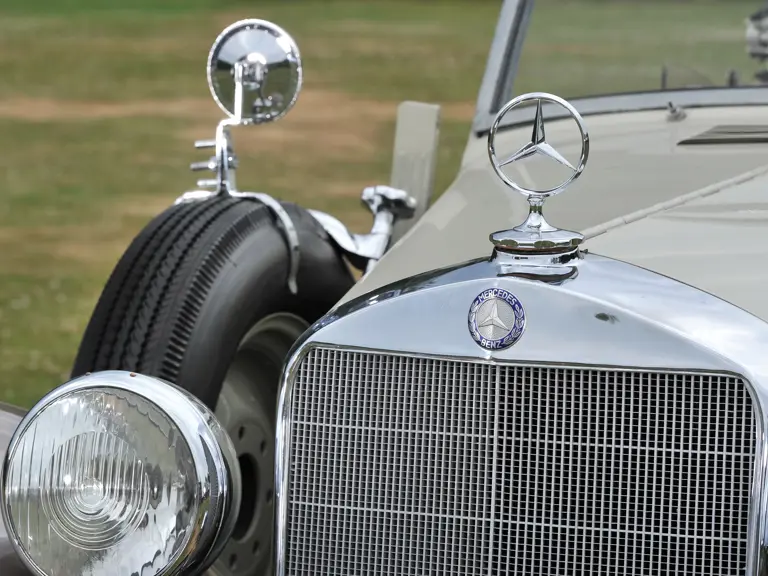
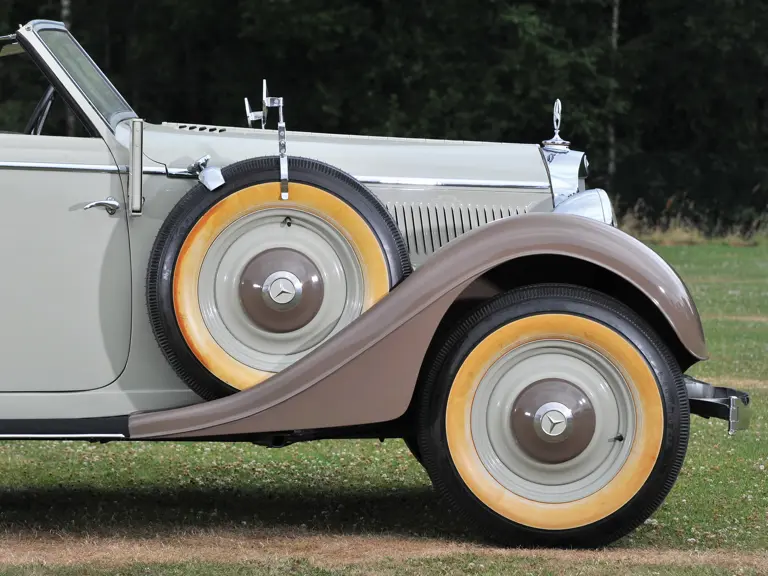
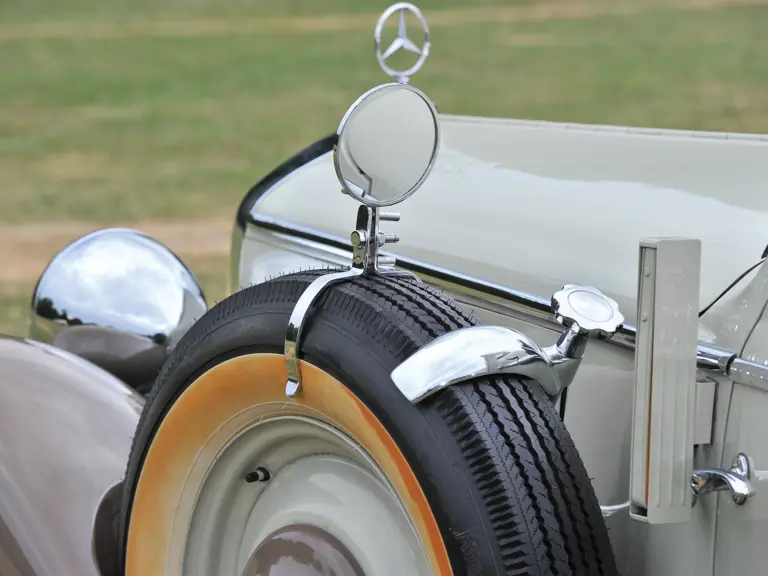
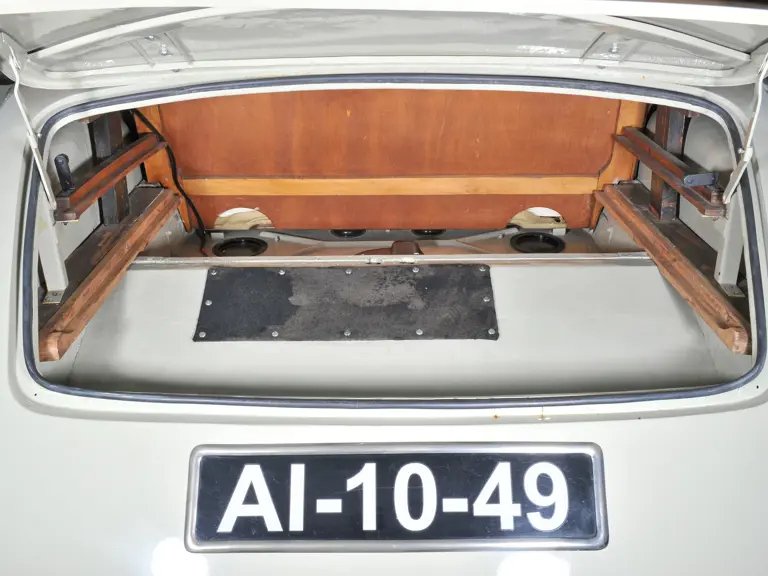
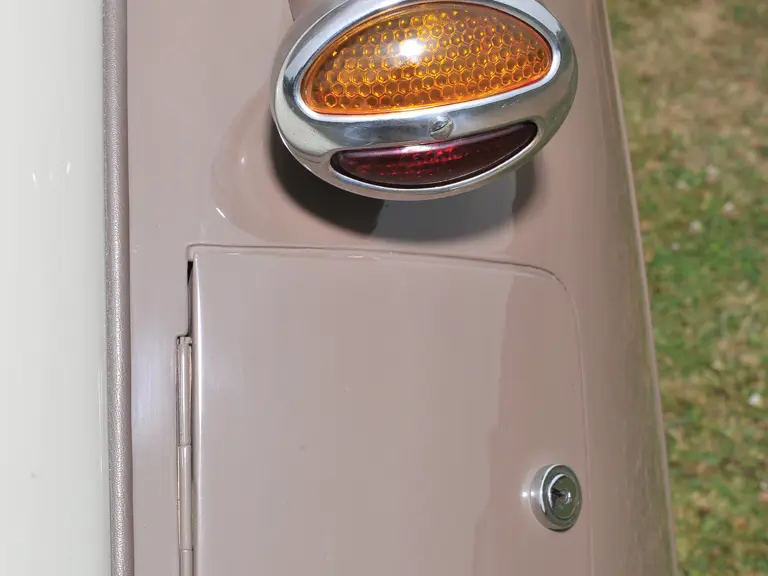
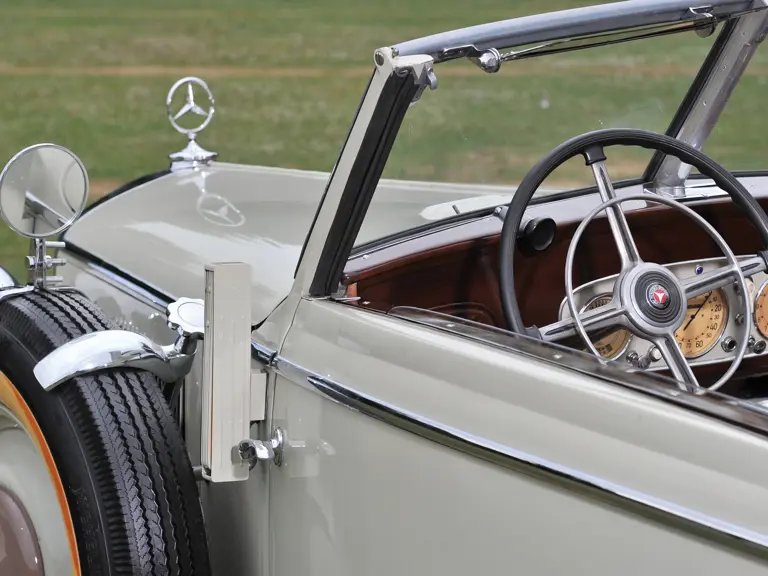
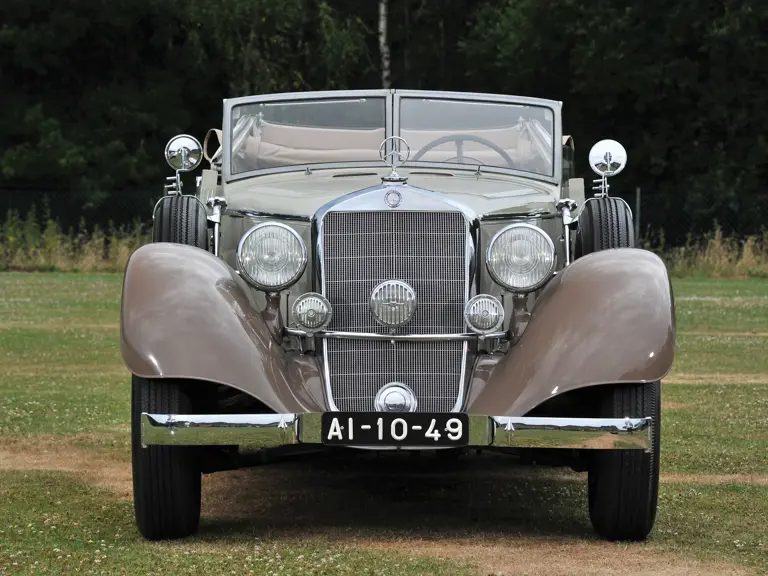
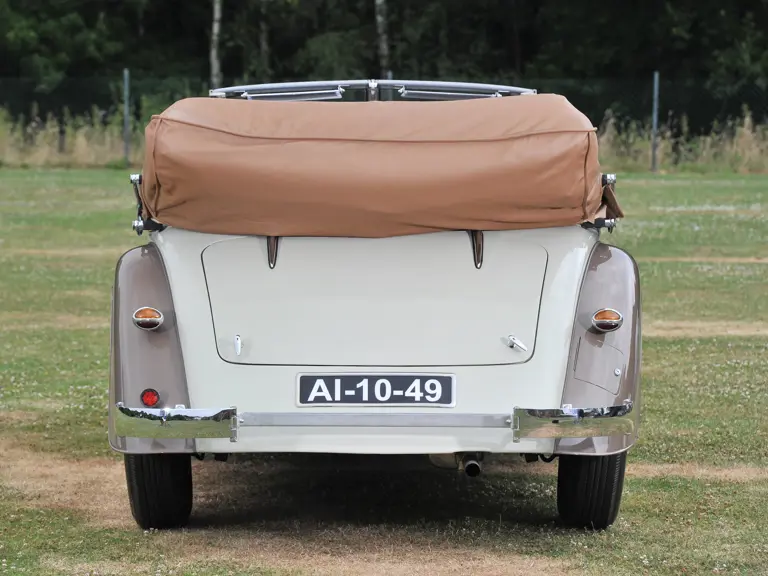


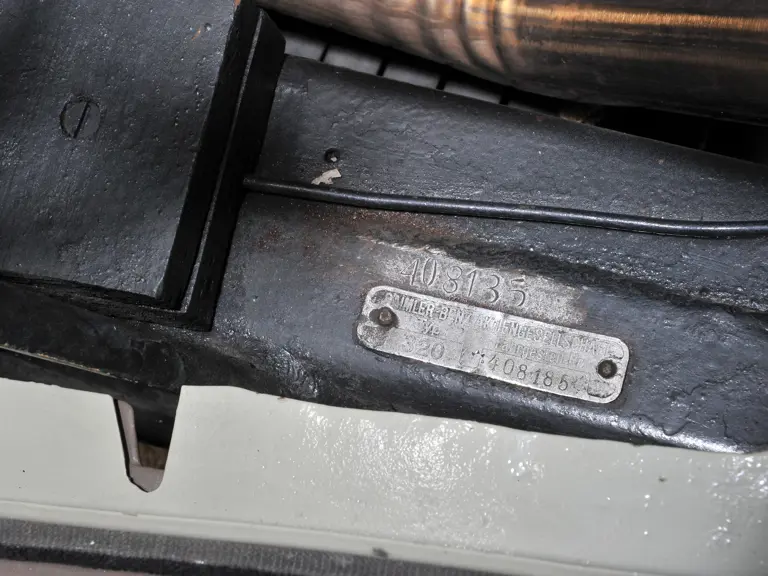



 | London, United Kingdom
| London, United Kingdom
